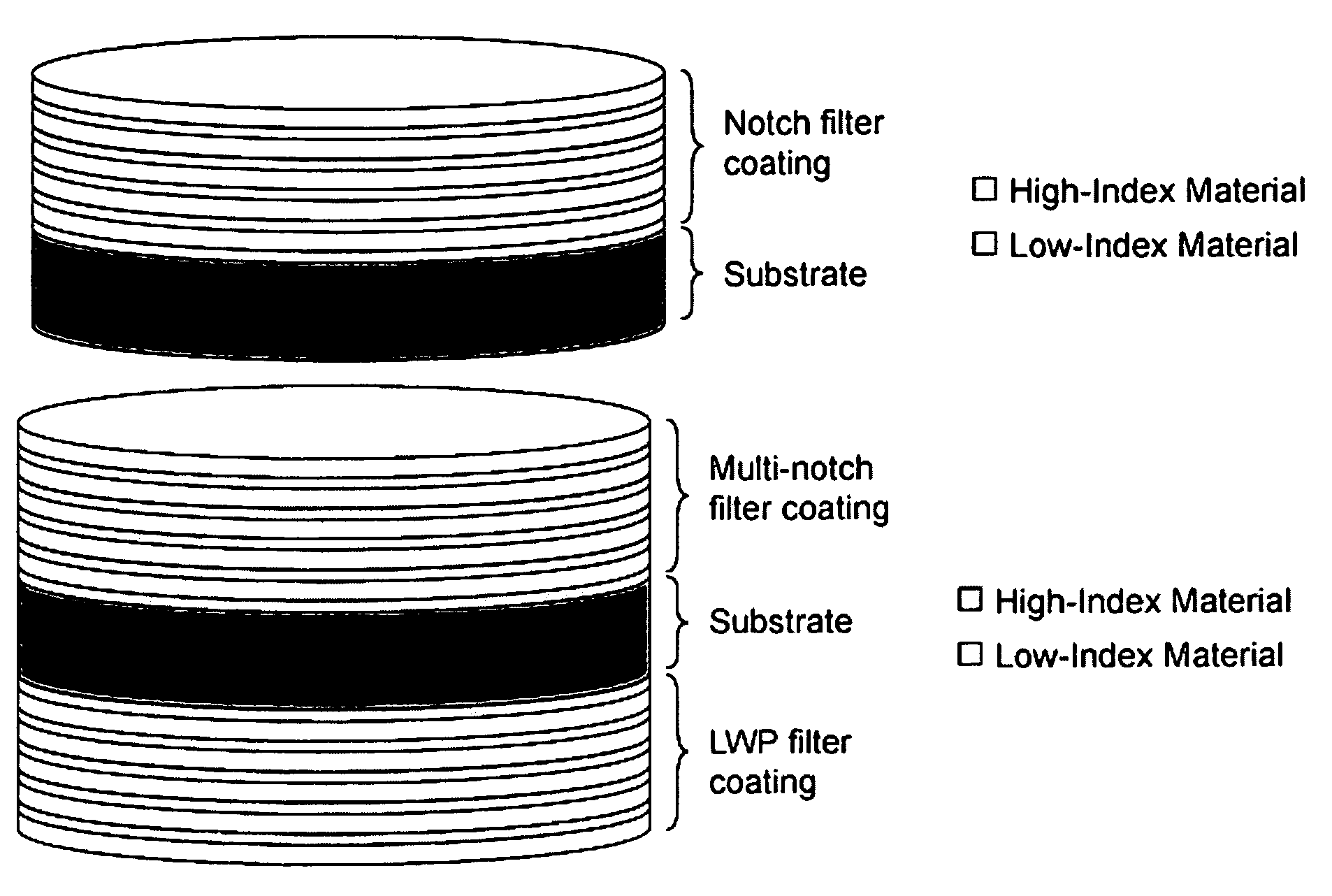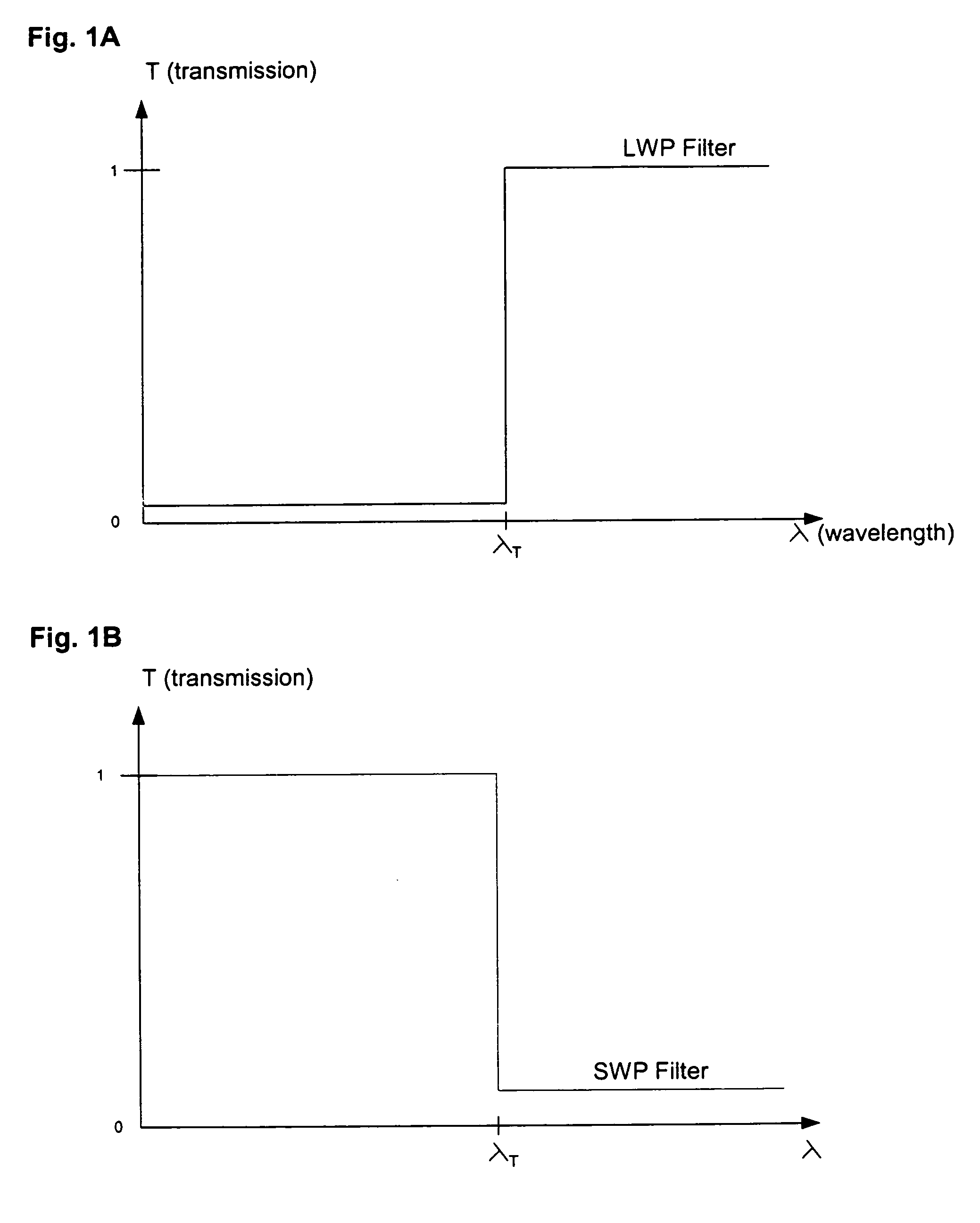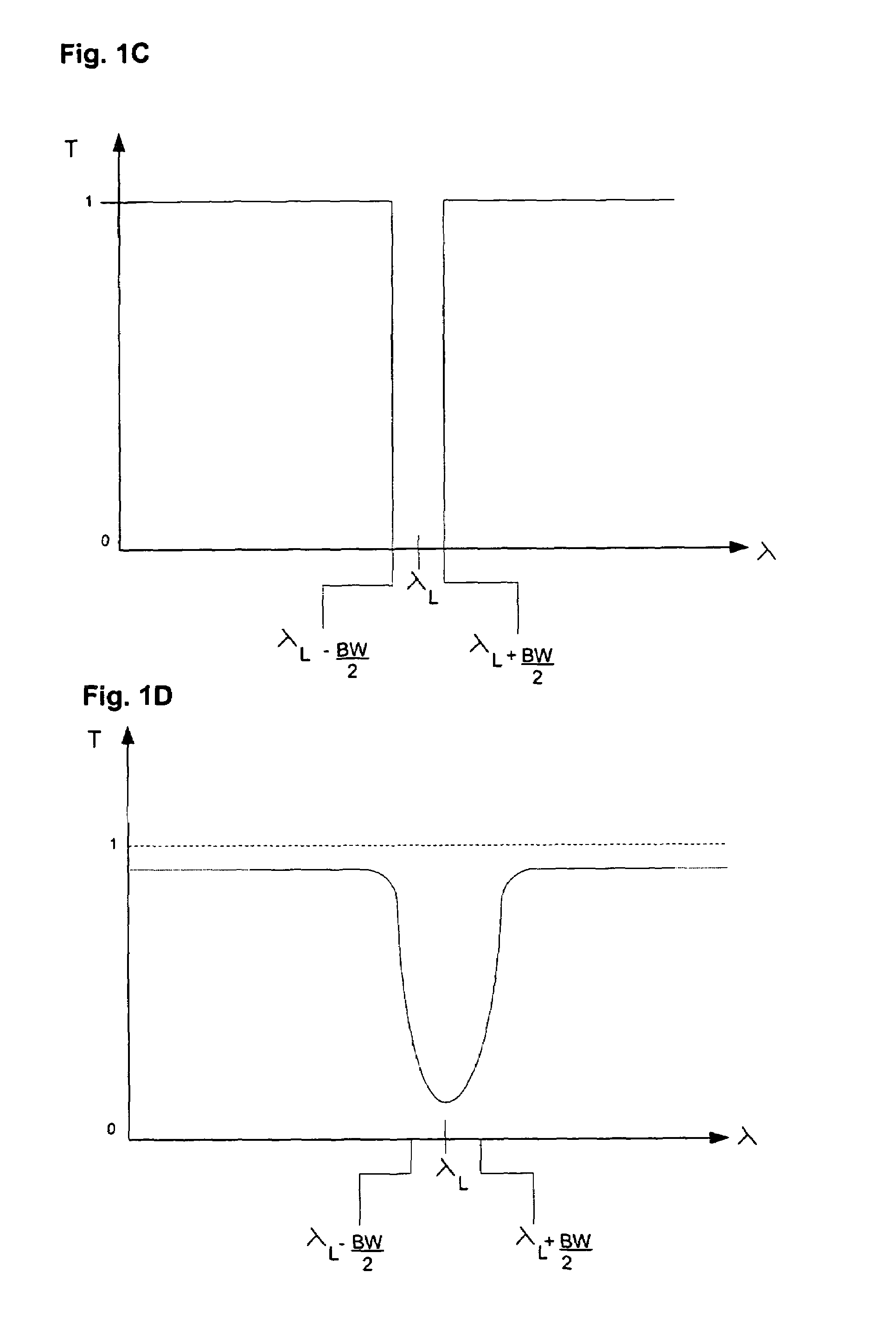Method of making high performance optical edge and notch filters and resulting products
a technology of optical edge and notch filter, which is applied in the field of making optical edge filter and optical notch filter, can solve the problems of increasing the amount of shifted light from the sample that will reach, physical softness, and easy scratching or damage, and achieves the effect of accurate deposition duration
- Summary
- Abstract
- Description
- Claims
- Application Information
AI Technical Summary
Benefits of technology
Problems solved by technology
Method used
Image
Examples
example 1
Long-Wave-Pass Edge Filter
[0128]A steep-edge LWP filter for a 532 nanometer notch was designed and fabricated in accordance with the LWP design strategy described above. The filter blocks the 532 nanometer laser light and light of lesser wavelength but to transmit light of longer wavelength. Appendix A gives the layer structure of the design. The optical thickness is given in units of quarter wavelengths (QWs) at the monitoring wavelength of 568 nanometers. The layers are counted from the substrate outward toward air. The substrate is BK7 glass, marketed by vendors such as Schott Glass. The design has 180 layers with a total metric thickness of 12.7 micrometers.
[0129]FIG. 10 shows the theoretical and measured transmission spectra of the resulting 532 nm LWP edge filter in accordance with an embodiment of the invention. Curve 1001 is the theoretical spectrum, curve 1002 is the measured spectrum, and curve 1003 is the laser wavelength line at 532 nm.
[0130]FIG. 11 illustrates the optic...
example 2
Short-Wave-Pass Edge Filter
[0131]A steep-edge SWP filter was designed and fabricated in accordance with the SWP design strategy described above. The filter is to block the 532 nanometer laser light and light of greater wavelength but to transmit light of shorter wavelength. Appendix B provides the layer structure of the design. The optical thickness is given in QWs at the monitoring wavelength of 510 nm. The substrate is BK7 glass. The design has 180 layers with a total metric thickness of 15.1 micrometers.
[0132]FIG. 12 illustrates the theoretical and measured transmission spectra 1201 and 1202, respectively, of the realized SWP filter. The laser-line at 532 nm is shown at 1203.
[0133]FIG. 13 shows the theoretical and measured optical density spectra 1301 and 1302, respectively, and the laser-line 1303. The apparent “kink” that occurs between about OD 4 and 5 is due to the limitations of the measuring instrument, not the filter.
example 3
633 nm Single-Notch Filter
[0134]A 633 nm single-notch filter having a structure corresponding to that shown in FIG. 7 was manufactured according to the processes described herein. The actual coating structure of this filter is set forth in Appendix C. A graph showing both the designed 1401 and measured 1402 transmission spectrum for this filter is shown at FIG. 14. FIG. 15 shows the designed 1501 and measured 1502 optical density for the manufactured 633 nm single-notch filter.
PUM
| Property | Measurement | Unit |
|---|---|---|
| Fraction | aaaaa | aaaaa |
| Fraction | aaaaa | aaaaa |
| Fraction | aaaaa | aaaaa |
Abstract
Description
Claims
Application Information
 Login to View More
Login to View More - R&D
- Intellectual Property
- Life Sciences
- Materials
- Tech Scout
- Unparalleled Data Quality
- Higher Quality Content
- 60% Fewer Hallucinations
Browse by: Latest US Patents, China's latest patents, Technical Efficacy Thesaurus, Application Domain, Technology Topic, Popular Technical Reports.
© 2025 PatSnap. All rights reserved.Legal|Privacy policy|Modern Slavery Act Transparency Statement|Sitemap|About US| Contact US: help@patsnap.com



